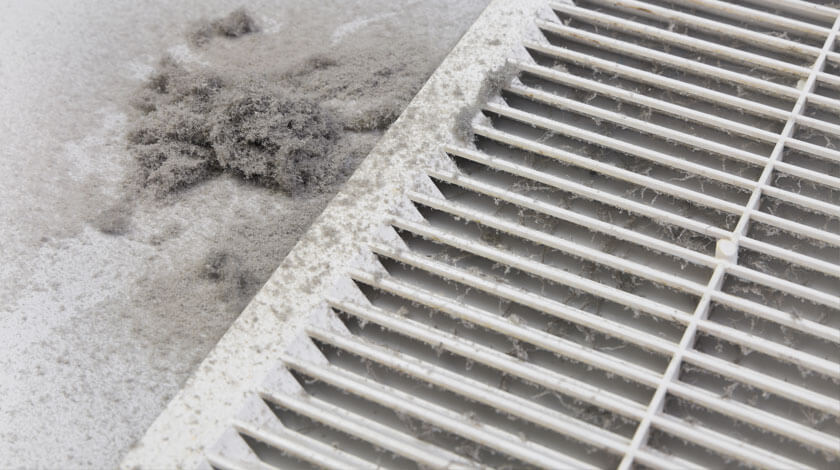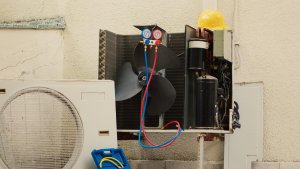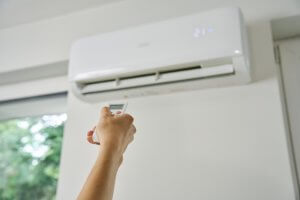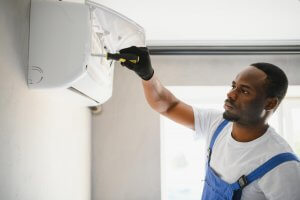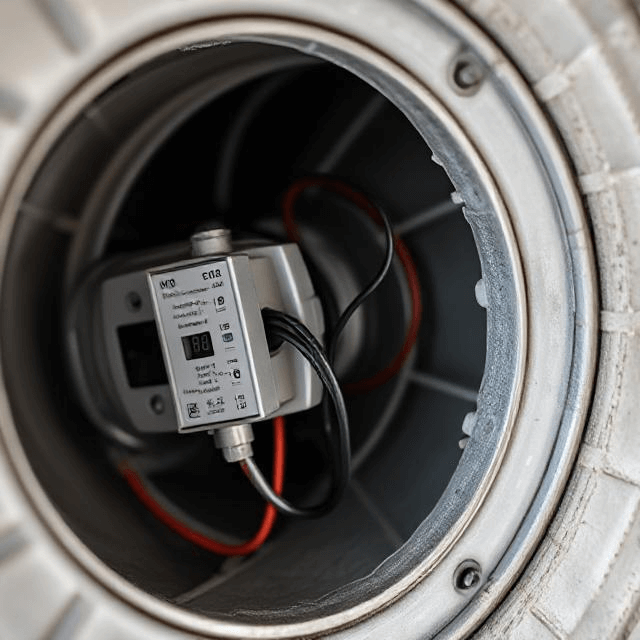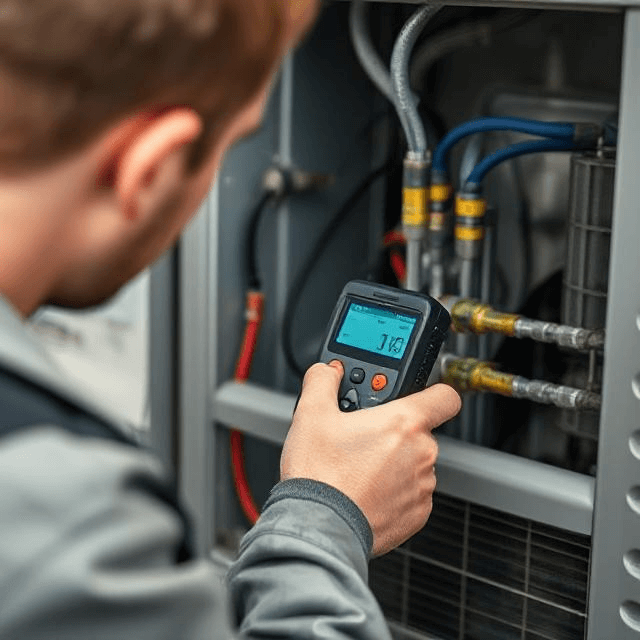A smart ventilation system is changing how we manage indoor air quality and energy use. Unlike traditional ventilation systems, the advanced systems automatically adjust the temperatures to the number of occupants, weather conditions, and other factors.
By integrating the smart ventilation solution, you can benefit from a comfortable environment while reducing energy costs.
Season Control HVAC discusses smart ventilation systems in this post and how they can improve your living and working environments.
Understanding Smart Ventilation System
Smart ventilation systems use a combination of sensors, controls, and algorithms to adjust the airflow based on real-time conditions within a building or home.
Unlike traditional systems, which operate on a fixed schedule or manual adjustments, smart ventilation adapts to changes in occupancy, indoor air quality, and even outdoor weather conditions.
This ensures the right amount of fresh air delivered when and where it’s needed without compromising comfort.
Mechanism of Smart Ventilation
The mechanism of smart ventilation is straightforward. Sensors are the main components and are placed throughout the environment. They collect CO2 levels, humidity, temperature, and occupancy data.
The central control unit processes the data, which uses algorithms to determine the most efficient ventilation strategy at any given time.
The system may decide to increase airflow in a crowded room, reduce it when a space is empty, or adjust outdoor air intake based on pollution levels or temperature.
The user interface of the smart ventilation system can be a physical control panel, a web interface, or a mobile app. This allows users to set preferences, view system status, and manually override automatic settings if necessary.
Benefits of Smart Ventilation System
Integrating intelligent ventilation solutions brings many benefits, such as improving comfort and efficiency within indoor environments.
Here are some of the key advantages:
Improved Indoor Quality
Intelligent ventilation systems maintain the indoor air quality at an optimal level. Adjusting airflow based on real-time measurements of CO2, humidity, and other pollutants reduces the concentration of indoor contaminants.
This leads to a healthier living and working environment, which benefits individuals with respiratory issues or allergies.
Energy Efficiency
Traditional ventilation systems often operate at a constant rate, regardless of the actual need for fresh air. In contrast, smart systems adjust ventilation rates based on occupancy and indoor air quality.
This limits energy wastage on over-ventilating unoccupied spaces or under-ventilating areas in use. It also leads to low utility bills.
Improved Comfort
Smart ventilation systems’ personalized climate control ability improves comfort levels in indoor environments. By optimizing airflow and temperature, these systems ensure that spaces are neither too hot nor too cold.
This customization makes the indoors pleasant and increases the occupant’s well-being and productivity.
Reduced Maintenance Costs
Smart ventilation systems are prone to less wear and tear than traditional HVAC systems. The durability extends their lifespan and saves on maintenance costs over time.
Additionally, real-time monitoring can detect issues early, allowing for preventative maintenance and avoiding costly repairs.
Convenience and Control
Smart ventilation systems feature a user-friendly interface. This helps users manage and modify ventilation settings to fit their comfort levels and preferences. Through a central dashboard, users can effortlessly control the indoor climate according to their needs.
The ability to make quick adjustments or set automatic schedules gives the users convenience that fits perfectly into the modern, technology-driven lifestyle.
Challenges of a Smart Ventilation System
Smart ventilation systems also have their own set of challenges. Anyone considering their integration into their environment should address these.
Here are some of the main challenges:
Initial Investment and Installation Complexity
The upfront cost of smart ventilation systems can be higher than that of traditional systems due to the advanced technology and sensors required. Installation may also be more complex, and professional assistance is needed to ensure the system is integrated correctly with existing HVAC systems.
Compatibility Issues
Not all smart ventilation systems are compatible with existing HVAC systems. This can be a problem if you try to connect smart ventilation to old buildings or systems without investing in upgrades.
Technical Glitches
As with any technology, smart ventilation systems can experience technical glitches or malfunctions. Regular software and hardware upgrades are necessary to keep the system running smoothly.
User Learning Curve
While the user interfaces of smart ventilation systems are intuitive, there can still be a learning curve for users who are not tech-savvy.
Traditional Ventilation Systems vs. Smart Ventilation Systems
Feature | Traditional Ventilation Systems | Smart Ventilation Systems |
Operational Flexibility | Operate on fixed schedules or manual adjustments. | Automatically adjust based on real-time data (occupancy, air quality, etc.). |
Energy Efficiency | May consume more energy due to constant operation. | Optimize ventilation rates, significantly reducing energy wastage. |
Indoor Air Quality | May not adequately adjust to fluctuating indoor pollutant levels. | Continuously monitor and adjust to improve air quality. |
Maintenance and Costs | Lower initial cost but potentially higher long-term expenses. | Higher initial investment but lower operational and maintenance costs. |
User Control and Convenience | Limited control options, often requiring manual adjustments. | Enhanced control through user-friendly interfaces (apps, web). |
Adaptability | Lack the ability to adapt without manual intervention. | Highly adaptable, using data and algorithms for automatic adjustments. |
Long-Term Benefits | Standard functionality without modern efficiency or health optimizations. | Offer improvements in air quality, energy savings, and user convenience. |
How to Choose the Right Smart Ventilation Solution?
When selecting the right smart ventilation solution, streamline your decision-making process with these essential points:
- Evaluate Space Requirements: Consider the size and complexity of your space to ensure the system can effectively manage airflow throughout.
- Set Air Quality Goals: Determine what improvements you need in air quality, such as reducing allergens or controlling humidity.
- Prioritize Energy Efficiency: If lowering energy costs is a goal, focus on systems known for their efficiency.
- Check System Compatibility: Ensure the smart ventilation solution works with your existing HVAC setup and any smart home systems.
- Look for Key Features: Essential features include robust sensors, user-friendly controls, and compatibility with preferred connectivity options like Wi-Fi or Bluetooth.
- Understand Installation and Maintenance Needs: Know what’s involved in installation and regular maintenance, including any professional services required.
- Consider Future Scalability: Choose a system that can grow with your needs, whether expanding to more rooms or integrating with new smart home technologies.
Making the Smart Switch to Better Air
Smart ventilation is more than just a tech upgrade. It’s about making our homes and workplaces smarter, healthier, and more aligned with our needs.
The shift from traditional ventilation to smart systems brings many benefits, from fresher air to lower bills, making it a change worth considering.
There might be hurdles like upfront costs and getting used to new tech, but the payoff in comfort and savings speaks for itself.
A smart ventilation system can transform your indoor air quality and energy efficiency. Contact Season Control HVAC for expert advice and installation today.



